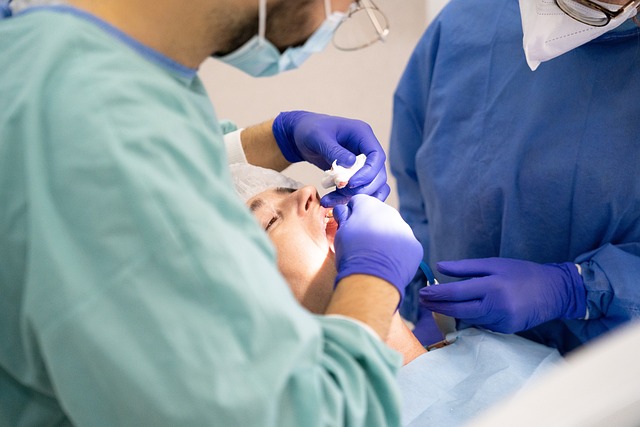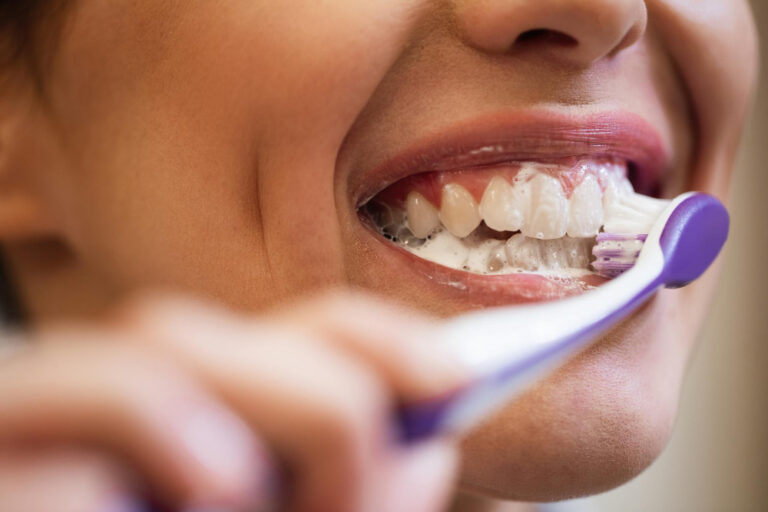Did you know that your oral health is directly related to your overall well-being? It’s true! The health of your teeth and gums can have a significant impact on your overall health and quality of life.
Poor oral health can lead to a variety of health issues, including heart disease, diabetes, and even dementia. That’s why it’s so important to take care of your teeth and gums and maintain good oral hygiene habits.
In this article, we’ll explore the link between oral health and overall well-being, and provide tips and strategies for maintaining good oral hygiene and promoting optimal health.

What is Oral Health?
Oral health refers to the health and function of the entire oral cavity, including the teeth, gums, tongue, and other soft tissues. It is an integral part of general health and overall well-being. Maintaining good oral health is crucial to prevent various systemic diseases, such as diabetes, respiratory issues, cardiovascular disease and cancer, and to promote a healthy lifestyle.
Oral diseases can affect anyone, regardless of age and gender. The most common oral diseases include tooth decay, gum disease, and oral cancer. These diseases are mostly preventable with proper oral hygiene habits, such as brushing twice daily, flossing daily, and regular visits to the dentist. Neglecting oral health can lead to tooth loss, difficulty chewing, and speech problems. It can also have an impact on a person’s mental well-being, including self-esteem and confidence.
Oral diseases share common modifiable risk factors, such as an unhealthy diet, poor dental hygiene, smoking, and excessive alcohol consumption. By adopting healthy habits such as regular brushing, flossing, and a healthy diet, the risk of oral disease can be reduced.
Good oral health has been linked to the prevention of chronic conditions such as diabetes, cardiovascular disease, respiratory diseases, and cancer. This is because the mouth harbors bacteria that can enter the bloodstream, leading to inflammation and an increased risk of these conditions. Studies have shown that practicing good oral hygiene, such as brushing and proper dental flossing, and regularly visiting the dentist can reduce the risk of these conditions.
The Link Between Oral Health and Overall Well-being
The link between oral health and overall well-being cannot be overstated. Poor oral health has proven to be a risk factor for a range of chronic diseases, including cardiovascular disease, respiratory disease, and diabetes. These conditions may seem unrelated to oral health, but studies show a direct correlation. Poor oral health can increase the likelihood of developing these chronic diseases and can also worsen existing conditions.
It is important to understand that oral health is much more than healthy teeth. The health of many anatomical structures, such as the gums, bones, ligaments, muscles, glands, and nerves, are all impacted by oral health. In fact, periodontal disease, a common oral health issue, can cause bone loss, which can destabilize the jaw bone and lead to tooth loss.
Oral health also shapes an individual’s self-image and sense of well-being. Poor oral health, such as tooth decay, gum disease, or missing teeth, can lead to low self-esteem and a negative self-image. This can, in turn, lead to social isolation, anxiety, and depression.
The impact of poor oral health extends beyond emotional well-being. It can lead to a range of health concerns and can contribute to conditions such as cardiovascular disease, respiratory disease, and diabetes. For example, gum disease causes inflammation in the gum tissue. When this inflammation is prolonged, it can increase the risk of developing cardiovascular disease. Similarly, poor oral health has been linked to an increased risk of respiratory infections and complications in individuals with diabetes.
In addition to physical health concerns, poor oral health can have a significant impact on a person’s overall quality of life. Tooth loss can make eating difficult, which may result in nutrient deficiencies and malnutrition. Speech problems may also arise, leading to communication difficulties at work or in social settings.
How Poor Oral Health can Affect Quality of Life?
Oral health plays a significant role in an individual’s overall well-being. Poor oral health can have a detrimental effect on the quality of one’s life. The impacts of poor oral health can be far-reaching and can affect an individual’s daily activities and emotional well-being.
One of the ways poor oral health affects daily activities is by causing pain and discomfort, making it difficult to eat, speak, and sleep. Misaligned teeth or untreated cavities can cause pain while chewing, drinking, or eating hot or cold food items. This kind of discomfort can make it challenging to enjoy food and can lead to malnutrition. It can also lead to difficulties in speaking and can affect communication at work or in social situations.
Dental diseases that result from poor oral hygiene, such as gingivitis and periodontitis, can have severe impacts on an individual’s quality of life. These dental diseases are linked to chronic illnesses such as cardiovascular disease, stroke and diabetes. The bacteria in the mouth can travel through the bloodstream, thereby increasing the risk of systemic diseases.
Tooth loss is a common outcome of poor oral health, and it can have a severe psychological impact on an individual. Tooth loss can affect one’s self-esteem, confidence, and social life. Tooth loss can cause individuals to feel embarrassed or ashamed, leading to social isolation, anxiety, and depression.
Good oral hygiene practices such as brushing twice a day, flossing, and visiting a dentist for regular check-ups can improve one’s quality of life. Good oral hygiene prevents dental diseases such as tooth decay and gum diseases, helps maintain a healthy mouth, and reduces the risk of other chronic diseases.
Respiratory Disease
Respiratory disease refers to a variety of conditions and disorders that impact the lungs and airways. It can encompass everything from mild conditions like allergies and asthma to more severe illnesses such as pneumonia and lung cancer. These diseases affect the respiratory system, which is responsible for breathing in oxygen and exhaling carbon dioxide. They can result in symptoms such as shortness of breath, wheezing, coughing, chest pain, and fatigue. Respiratory diseases can have a significant impact on an individual’s quality of life and can even be life-threatening.
The Connection Between Poor Oral Hygiene and Respiratory Disease
Poor oral hygiene can play a significant role in the development and exacerbation of respiratory diseases. This link is due to the migration of oral bacteria to the lungs, which can cause various respiratory infections such as pneumonia. The connection between oral hygiene and respiratory disease is not immediately apparent, but research has shown that these two factors have a direct impact on each other.
Oral bacteria can travel from the mouth to the lungs, causing infections that can further exacerbate respiratory problems. In particular, the elderly and those with pre-existing respiratory conditions are at greater risk of complications caused by oral bacteria. According to a study published by the International Journal of Infectious Diseases, those with poor oral hygiene practices are at a higher risk of respiratory infection due to the increased presence of oral bacteria in their mouths.
In addition to pneumonia, poor oral hygiene can also be linked to common respiratory diseases such as chronic obstructive pulmonary disease (COPD), asthma, and bronchitis. These respiratory issues can be aggravated by the presence of oral bacteria, which can lead to inflammation and infection in the respiratory system.
The importance of good oral hygiene practices cannot be overstated in reducing the risk of respiratory disease. Regularly brushing and flossing teeth can help to reduce the number of oral bacteria present in the mouth. It is also essential to maintain regular dental check-ups and cleaning appointments to prevent the buildup of plaque and tartar, which can harbor harmful bacteria.
The Role of Bacteria in Respiratory Diseases Caused by Poor Oral Hygiene
Poor oral hygiene not only affects our teeth and gums but can also have a negative impact on our respiratory health. When we talk or cough, tiny droplets are expelled from our mouth and throat, which can contain harmful bacteria. These droplets can then be inhaled, causing infections or exacerbating existing respiratory conditions such as pneumonia.
People with gum disease are particularly susceptible to respiratory infections because they have higher levels of bacteria in their mouths. Periodontal disease, a severe form of gum disease, has been linked to a higher risk of pneumonia, according to a study published in the Journal of Periodontology. This is because the bacteria from the infected gums can be aspirated into the lungs, causing infections and making it harder for the lungs to function.
In addition to pneumonia, poor oral hygiene has also been linked to other respiratory illnesses such as chronic obstructive pulmonary disease (COPD) and bronchitis. Studies have found that the same bacteria that cause periodontal disease are also present in the lungs of patients with COPD. The bacteria can cause inflammation in the respiratory system, making conditions like COPD and bronchitis worse.
The role of bacteria in respiratory diseases caused by poor oral hygiene cannot be overstated. The Centers for Disease Control and Prevention (CDC) have reported that poor oral health is a risk factor for respiratory infections. Regular brushing and flossing can help reduce the number of bacteria in our mouths, while regular dental check-ups can ensure that any signs of gum disease are caught and treated early.
Reducing the Risk of Respiratory Diseases Through Good Oral Hygiene Practices
Good oral hygiene is a critical component of overall health and well-being. While most of us understand that brushing and flossing regularly can help prevent cavities and gum disease, many of us are not aware of the link between oral health and respiratory diseases. Recent studies have shown that poor oral hygiene practices can increase the risk of respiratory diseases such as pneumonia, chronic obstructive pulmonary disease (COPD), and bronchitis.
Periodontal disease, a severe form of gum disease, has been identified as a risk factor for respiratory diseases. Research has shown that people with gum disease have higher levels of bacteria in their mouths, which can be aspirated into the lungs, causing infections and making it harder for the lungs to function. In fact, a study published in the Journal of Periodontology found that individuals with periodontal disease were at a higher risk of developing pneumonia.
Furthermore, the same bacteria that cause gum disease are also present in the lungs of patients with COPD and bronchitis. The bacteria can cause inflammation in the respiratory system, making conditions like COPD and bronchitis worse. It’s clear that maintaining good oral hygiene practices is a crucial step in reducing the risk of respiratory diseases.
So, how can we reduce our risk of respiratory diseases through good oral hygiene practices? Here are some tips:
- Brush twice a day with a soft-bristled brush and fluoride toothpaste. Make sure to brush for at least two minutes each time.
- Floss daily to remove plaque and food particles between teeth.
- Use an antibacterial mouthwash to kill lingering bacteria in your mouth.
- Visit the dentist regularly for check-ups and cleanings. Your dentist can identify any signs of gum disease early and provide appropriate treatment.
- Avoid sugary foods and drinks that can contribute to tooth decay and gum disease.
- Maintain a healthy diet, as a healthy body is more equipped to fight infections.
Cardiovascular Disease
Cardiovascular disease is a medical condition that affects the heart and/or blood vessels. It is often referred to as heart disease or, more broadly, as a type of chronic disease that affects the cardiovascular system. Cardiovascular disease can take many forms, including coronary artery disease, heart failure, arrhythmias, and valve diseases, among others. Symptoms can range from mild to severe, and in some cases, can be fatal. Risk factors commonly associated with cardiovascular disease include high blood pressure, high cholesterol, obesity, lack of physical activity, and smoking.
How Poor Oral Hygiene Impacts Cardiovascular Disease Risk Factors?
Did you know that poor oral hygiene can increase the risk of cardiovascular disease? Gum disease, an effect of poor oral hygiene, can significantly impact the health of the heart and increase the likelihood of cardiovascular disease.
Research studies have demonstrated a clear link between gum disease and cardiovascular disease. Gum disease can increase the risk of heart attacks, strokes, and other cardiovascular events. The reason for this is because the bacteria from gum disease can get into the bloodstream and cause inflammation throughout the body, including the arteries leading to the heart.
Furthermore, periodontal disease, which is a severe form of gum disease, can lead to inflammation and narrowing of the arteries, putting individuals at a higher risk for heart disease. As a result, failing to practice good oral hygiene habits consistently can lead to a range of health concerns beyond just those related to oral health.
The risk factors of cardiovascular disease that are impacted by poor oral hygiene include high blood pressure, high cholesterol, and diabetes. Several mechanisms have been proposed to explain the link between poor oral hygiene and cardiovascular disease. For example, the harmful bacteria from gum disease can impact blood sugar levels, which can contribute to the development of diabetes. These bacteria can also trigger the body’s immune response, resulting in chronic inflammation that can damage the arterial walls, leading to the formation of blockages.
Good oral hygiene practices such as brushing twice a day, flossing regularly, and visiting the dentist for check-ups can lower the risk of cardiovascular disease. Studies have found that individuals who brush their teeth for at least two minutes twice a day have a lower risk of developing cardiovascular disease compared to those who brush less frequently.
Benefits of Good Oral Hygiene for Cardiovascular Health
Good oral hygiene is essential not only for a healthy mouth but also for overall well-being, including cardiovascular health. Research studies have found a clear link between gum disease and cardiovascular disease. Gum disease, also known as periodontal disease, can increase the risk of heart attacks, strokes, and other cardiovascular events.
The reason for this link lies in the fact that harmful bacteria from gum disease can enter the bloodstream and cause widespread inflammation in the body, including the arteries leading to the heart. Over time, this inflammation can lead to the narrowing of the arteries and increase the risk of developing cardiovascular disease.
Maintaining good oral hygiene practices, such as brushing twice a day, flossing regularly, and visiting the dentist for check-ups, can significantly reduce the risk of gum disease and, consequently, improve cardiovascular health.
When it comes to cardiovascular health, good oral hygiene can specifically benefit by reducing inflammation levels in the body. Inflammation is a risk factor for cardiovascular disease, and by maintaining good oral hygiene, individuals can lower the levels of inflammation markers in their bloodstream.
Besides reducing inflammation, good oral hygiene practices also contribute to lower blood pressure, improved markers of cholesterol and blood sugar levels, leading to a reduced risk of developing cardiovascular disease.
Research has also shown that good oral hygiene practices can prevent or manage other systemic diseases. For instance, gum disease has been linked to an increased risk of premature birth in pregnant women, while poor oral health has been found to increase the likelihood of developing diabetes and some forms of cancer.
Systemic Diseases
Systemic diseases are medical conditions that affect multiple organs or systems in the body. Unlike localized diseases that affect one specific area or system, systemic diseases can have varying degrees of impact throughout the body. This is because they often originate in one area but can spread to other organs or systems, leading to a range of symptoms and complications. Examples of systemic diseases include diabetes, lupus, rheumatoid arthritis, and multiple sclerosis. Given their complex nature, systemic diseases often require long-term management and can significantly impact a person’s quality of life.
Understanding Systemic Diseases and Their Links to Poor Oral Health
Oral health is an essential component of overall well-being, and it is becoming increasingly clear that poor oral health can have far-reaching consequences beyond the mouth. Studies have identified links between poor oral health and systemic diseases such as cardiovascular disease, diabetes, and respiratory disease.
Cardiovascular disease, in particular, has been linked to periodontal disease, a severe form of gum disease, and studies suggest that oral bacteria can enter the bloodstream and cause inflammation, increasing the risk of developing other health conditions. This occurs when the gum tissue becomes inflamed due to the presence of oral bacteria, which can then enter the bloodstream through microscopic breaks in the gums. Once in the bloodstream, these bacteria can trigger a systemic inflammatory response that can damage blood vessels and increase the risk of cardiovascular disease.
Similarly, patients with poorly controlled diabetes are at increased risk of developing periodontal disease. This relationship is thought to be bidirectional, meaning that periodontal disease can make it more difficult to control blood sugar levels and that high blood sugar levels can make it harder for the body to fight gum infections.
Respiratory diseases such as pneumonia and chronic obstructive pulmonary disease (COPD) have also been linked to poor oral health. Inhaling bacteria from infected oral cavities can lead to bacterial lung infections, which can be particularly dangerous for older adults and individuals with compromised immune systems.
Furthermore, medical conditions such as osteoporosis and Paget’s Disease can impact oral health, often by causing bone loss in the jawbone, which is necessary to support natural teeth. Additionally, medications such as antidepressants and antihistamines can cause dry mouth, which can increase the risk of tooth decay and other oral health issues.
To reduce the risk of developing systemic diseases, it is essential to maintain good oral hygiene practices, including brushing twice daily with a soft-bristled brush, flossing once daily, and using an antiseptic mouthwash as needed. Patients who are at increased risk of medical conditions due to their oral health may need to adjust their dental treatment plan to account for these underlying conditions.

Conclusion
In conclusion, maintaining good oral hygiene is crucial for overall health and well-being. Poor oral health can have negative effects on various health conditions, including respiratory and cardiovascular diseases, and can lead to tooth decay and tooth loss. By practicing good oral hygiene, such as brushing teeth twice daily with a soft-bristled brush and fluoride toothpaste, flossing daily, maintaining a healthy diet low in sugary foods, and visiting the dentist regularly for cleanings and check-ups, individuals can greatly reduce their risk of developing these health conditions.
Understanding the link between oral health and overall well-being can encourage individuals to prioritize their oral health. By recognizing the impact that good oral hygiene practices can have on overall health, individuals may be more motivated to take care of their teeth and gums. Regular dental visits are also essential for maintaining good oral health and catching any potential issues early on.
Taking care of one’s oral health is a key component of maintaining overall health and well-being. By implementing good oral hygiene practices and prioritizing regular dental visits, individuals can greatly reduce their risk of developing oral health issues and associated health conditions.…










 Brushing your teeth well is essential to maintain good oral hygiene and to protect your smile from cavities and other ailments. But how many times a day should you wash them? When is the best time? How should they be brushed? What are the right tools to use? In short, brushing your teeth well is a topic that offers many insights and on which there is also a lot of wrong information circulating.
Brushing your teeth well is essential to maintain good oral hygiene and to protect your smile from cavities and other ailments. But how many times a day should you wash them? When is the best time? How should they be brushed? What are the right tools to use? In short, brushing your teeth well is a topic that offers many insights and on which there is also a lot of wrong information circulating. The Transparent Braces For Adults And Children To Each Treatment
The Transparent Braces For Adults And Children To Each Treatment Chewing properly is a non-trivial activity that deserves to be explored, especially since chewing incorrectly can damage digestion and cause discomfort to the whole body. But why do you chew badly? The reason often lies in dental malocclusion, preventing correct mouth closure.
Chewing properly is a non-trivial activity that deserves to be explored, especially since chewing incorrectly can damage digestion and cause discomfort to the whole body. But why do you chew badly? The reason often lies in dental malocclusion, preventing correct mouth closure.